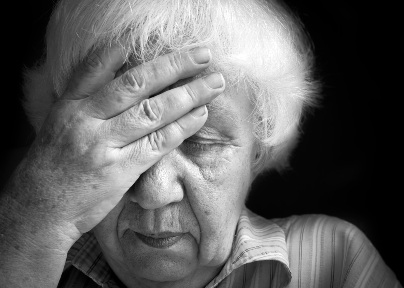Physical needs of people with dementia can get 'mistaken for behaviour classed as challenging'
The physical needs of people with dementia often get missed, not noticed or even mistaken for behaviours that are inappropriate and often will be classed as challenging, according to a nurse and social care trainer.

Peter Gathercole, who runs Endeavour Care Training with his wife Diana, wants care workers, relatives and friends to look beyond the behaviour and see what is causing it.
He says that sometimes people with dementia can be in pain but they are unable to communicate that they are in pain.
A person with dementia “banging their head against the wall because they have a headache is often seen as self-harming, disruptive, challenging instead of getting the recognition and understanding from care workers as to why it is happening”.
He quotes NICE Guidelines (2006) which state ‘If a person with dementia has unexplained changes in behaviour and/or shows signs of distress, health and social care professionals should assess whether the person is in pain, using an observational pain assessment tool if helpful.’
“We often misdiagnose pain when it is considered that the service user is exhibiting behaviours that challenge, which if the reason is pain will not help the service user,” says Mr Gathercole.
If people with dementia are showing behaviour that ‘challenges’ then his advice is to talk to the person directly and ask questions.
It is also vital to get to know the person with dementia and get an understanding of their daily routine, as that will show any differences in their behaviour.
Behaviour to look out for:
• vocalisations (or making sounds): whimpering, groaning, crying
• facial expressions: looking tense, frowning, grimacing, looking frightened
• changes in body language: fidgeting, rocking, guarding part of body, withdrawn
• behavioural changes: increased confusion, refusing to eat, alteration in usual patterns
• bodily changes: raised temperature, pulse rate or blood pressure, perspiring, flushing or looking very pale
“Make note of changes in the person and explore their behaviours to determine if pain is their concern, the use of pain assessment tools will also help determine the cause of the pain, its severity, when it occurs and what helps to make the pain better or worse,” says Mr Gathercole.
Endeavour Care Training offers two training courses designed to help care workers better understand and respond to the needs of dementia sufferers – ‘Dementia Awareness’ and ‘Distressed Behaviour’.
Latest News
 29-Jul-24
Dementia Bus gives carehome.co.uk staff insight into life with dementia
29-Jul-24
Dementia Bus gives carehome.co.uk staff insight into life with dementia
 01-Mar-24
Find out the top care homes in 2024
01-Mar-24
Find out the top care homes in 2024
 21-Mar-23
UK's top care homes in 2023 revealed
21-Mar-23
UK's top care homes in 2023 revealed
 03-Jan-23
carehome.co.uk launches free care helpline
03-Jan-23
carehome.co.uk launches free care helpline
 13-Dec-22
5 mins with Emily Whitehurst, chief operating officer for Constantia Healthcare
13-Dec-22
5 mins with Emily Whitehurst, chief operating officer for Constantia Healthcare